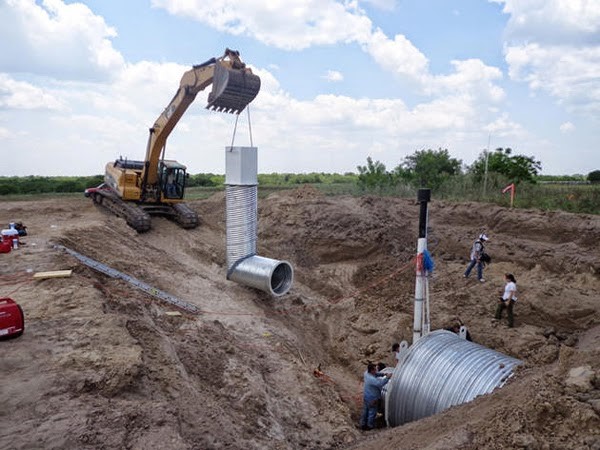Felix Rohatyn
As a banking professional, your job depends on minimizing risk for your bank. There are multiple ways to do this. But regular site visits to loan properties are certainly among the top practices.
That’s because regular site visits help banks curb unwelcome surprises by offering an opportunity to spot potential problems earlier. Ultimately, a bank can be more proactive with their loans.The dilemma, however, is that site visits are time-consuming and cumbersome.
A friend recently made a very profound statement….”As for you bankers, you act so aggressively when you are selling your products to us, and then suddenly go cold and unapproachable when the deal is closed.” He continued. “Is it just our money you want and not a relationship with us?” It really hit me hard because what he was saying is true! Having changed positions from a bank staff to a bank customer, I started reflecting on these words and realized that apart from the fact that it is true, it is actually a reflection of our human nature. I smiled to myself as I remembered my own aggression anytime I pray to God to help solve my problems! However, once I get the solution, my prayers become dull, with very little vim. I confess to that.
The Banker’s Duty of Care
Anyway, thinking of it in my mature years, I have grown to realize how caring for customers make a difference to them as well as to the bank’s bottom line. Many loan defaulters have an easy playing field when they are left to themselves after the funds have been disbursed. When this happens, loan officers are unable to detect early signs of default. So it goes both ways: Investment/Sales Executives sometimes desert their customers after the deal is closed.
We don’t know that subsequent visits or calls can make the customer feel a greater sense of belonging and can even bring more funds from across the seas to be added to the existing funds. Loan Officers sometimes also neglect their customers when the loan is approved and disbursed. In both circumstances, we should know that customer visits or calls as well as face to face meetings go a long way to impact the bank’s profitability. How do we minimize the risk of default of bank loans and customer attrition?
Know Your Customer (KYC)
How close are you to your customer? When the account was being opened, you sharpened your instincts, listened carefully to every word from the customer, looking out for any danger signals and risk profiling them to ensure their KYC is up to date….We found out if they were who they claim to be (checking for proof of ID), their addresses were at where they claim to be (checking their proof of residence) and their businesses were duly registered (checking their registration documents.
After collecting this information, how are we sure that the expected turnovers or account operation is in line with the initial expectations? You will be surprised to find out that a student’s savings account will suddenly show unexpected transactions such as an inward remittance of forty thousand euros from Germany! Sure. That is when we get alarmed and start investigations and filing suspicious transactions report to the Financial Intelligence Center.
Make Site Visits Frequent
The risk to your bank increases every time you push back a loan inspection. And the longer time goes between visits, the more likely a surprise such as missing collateral, a change of ownership, or property devaluation will occur. To help avoid this, create a schedule that ensures you visit all properties consistently. Not only will this keep problems from falling through the cracks, but you’ll feel more confident in your lending decisions going forward.
Supervision and Follow-up of Loans
This week, I will concentrate on visits to borrowing customers. The basic objective of supervision and a follow-up system is to ensure that the advances granted by the bank are safe. The funds lent by banks belong to the depositors and the bank staff have responsibility in safeguarding the interests of millions of depositors. Supervision of loans starts right from the stage of selection of a borrower whereas follow-up of loans starts immediately after disbursement of the loan.
The branch is the unit from which the proposal is made for any advance and disbursement channeled through. The borrowers’ maintain accounts are with the branch, operations are conducted through the account, reports, and returns are submitted, by the borrower to the branch and loans officers. Success therefore depends on how effectively the branch and loans departments ensure supervision and follow-up of the credit.
Examples of feedback from Visits by Loan Officers
Let me share some real life cases that may not be found in books:
Case One: A key distributor for Unilever products who benefitted from a guarantee to his supplier (Unilever) diverted the sales proceeds into building a warehouse. The bank which had guaranteed payment of cheques had to continue the misfortune of honouring the cheques until the amounts were crystalized into an actual loan, running into several hundreds of thousands of cedis.
Didn’t the Loan Officer make regular visits to the shop(s)? What about the account operation? Were there no evidence of less turnovers, diversion of payments to builders or suppliers of building raw materials? Dear Loans Officers, please do not leave the monitoring of account operations to the branch operations staff alone. In banks where the loan processing rests only at the Business or Retail departments, they sometimes may not have the full details of the loan agreement and will only honour cheques that are funded!
Case Two: A customer who has been financed to sell alcoholic beverages suddenly displays a variety of other items such as rice, sugar, oil etc. A loan officer may admire customer’s ingenuity and business acumen but for all you know, he/she has defaulted in paying the supplier of the beverages and has therefore diverted to try other items whom he or she has no experience to deal in! Mr. Loan Officer, please visit your customer, check their books, as well. It falls within your right.
Case Three: A customer who was financed to complete a government building contract suddenly moved house into a posh residential area, “acquired a new wife” as well as a brand new luxury car! The building site was deserted. He put 90% of the blame on non-payment by the government because he is not a “card bearing” member of a current ruling government’s party! This one too, they bring politics inside!
Case Four: Sometimes a call or visit can even help identify sick or even deceased customers! Relatives of borrowing customers are usually the last to inform the bank about his or her death. You may not know but a family member may be operating a deceased account’s sole proprietor’s account without the knowledge of the bankers. The KYC on customers should be continued until the account is terminated.
Obligations and Responsibilities of Loan Officers
Now, let me end this session with the issues that can be found in books:
- To ensure that operations of accounts are regular, bad indications warrant greater supervision.
- To keep watch over the inflow and outflow of Fund.
- To verify proper end-use of funds for the purpose for which loan was given and the progress made in construction and operations.
- Ascertain reasons for default or delayed payment of loan installments.
- Ascertain financial positions of the borrowing concern from time to time through the study of audited Balance sheet/Financial statement.
- To see that the project is carried out as it was intended or modified in the light of changing circumstances.
- To see that the conditions of lending are complied with by the borrowers.
- To ensure that the proceeds of the loans are made available to the borrower according to project need and to see that the fund so released is utilized for the intended purpose.
- To ensure adequate feedback to management and appraisal team in matters of cost over-runs, financing deficiencies and project implementation delays, if any.
- To obtain payment of installment promptly and to prevent occurrence of arrears in the normal course.
- To maintain a satisfactory relationship with the customer with a view to promoting a well – balanced attitude of helpfulness and understanding.
I hope these tips are useful. Next week we shall look at the role of the Investment, Marketing or Sales Executives.
(TO BE CONTINUED)
ABOUT THE AUTHOR
Alberta Quarcoopome is a Fellow of the Institute of Bankers, and CEO of ALKAN Business Consult Ltd. She is the Author of Three books: “The 21st Century Bank Teller: A Strategic Partner” and “My Front Desk Experience: A Young Banker’s Story” and “The Modern Branch Manager’s Companion”. She uses her experience and practical case studies, training young bankers in operational risk management, sales, customer service, banking operations and fraud.
CONTACT
Website www.alkanbiz.com
Email:alberta@alkanbiz.com or [email protected]
Tel: +233-0244333051/+233-0244611343










